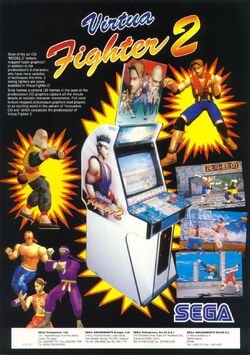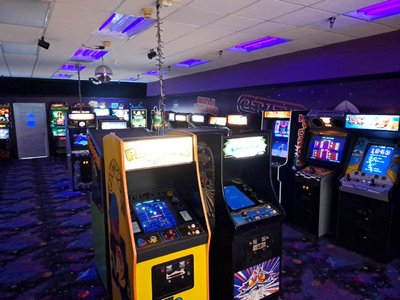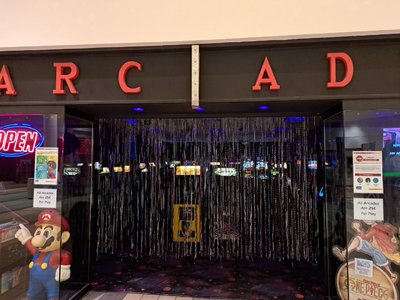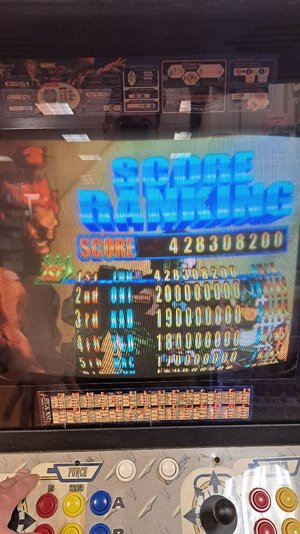If you’re anything like me, the mere mention of “arcades” probably conjures up a whirlwind of neon lights, blaring soundtracks, and the distant, rhythmic stomps of someone utterly dominating a DDR machine. Arcades weren’t just gaming hubs; they were cultural nexuses where friends became rivals, strangers became allies, and quarters became precious tickets to worlds of endless possibility. But here we are in 2025, and arcades, at least in their traditional form, are a shadow of their former selves. Or are they?
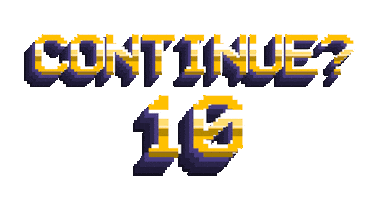
Let’s take a deep dive—insert coin if you will—into the rise, fall, and potential revival of arcades

When Arcades Were King
Back in the ‘70s, ‘80s, and ‘90s, arcades were the place to be. Whether you were slamming the gas pedal in Crazy Taxi, pulling off a Hadouken in Street Fighter II, or grooving your heart out to Dance Dance Revolution, the arcade was a sensory overload of adrenaline and community. Japan—arguably the beating heart of arcade culture—perfected the model with sprawling multi-floor arcades in places like Akihabara, where you could lose hours (and yen) hopping from rhythm games to claw machines to cutting-edge fighters like Tekken and Virtua Fighter, which is finally making a comeback to much fanfare. Players would line up to perfect their skills and execute frame-perfect combos, turning the game into a symbol of dedication and mastery.

Meanwhile, in the West, arcades often lived in malls or standalone spots where kids burned through allowance money and competed for leaderboard glory. They weren’t just gaming centers; they were social ecosystems—a meeting ground for rivals and friends alike. South America brought its own flavor, blending competitive fighting games with an open, lively community vibe where cheering for strangers was the norm. In the Arab world, arcades were a place of discovery, where kids marveled at games like Metal Slug, King of Fighters, and even quirky racers like Daytona USA, sharing consoles and celebrating high scores in communal joy. Across the globe, arcades weren’t just places to play; they were places to belong.


You know, it’s wild how arcades, once these vibrant social hubs full of life and excitement, are now seen as relics. The trend today? Ignore the magic of evolution and instead slap “retro” on it or—worse—abandon it altogether. What do we get instead? Gacha games. Yeah, you could argue they’re arcade-ish if you squint hard enough. I mean, some arcade machines back in the day were gacha-adjacent. But now, they’ve turned that concept into a soulless grind, a service designed to drain your wallet and, let’s be real, your soul. Remember when getting an SSR felt like winning the lottery? Now it’s just an algorithm mocking you.
At least games like Dragon Ball Heroes kept it interesting. You had actual physical cards to collect, cards that felt real, and you got to slap them on the machine, watching your favorite Saiyan pull off insane moves. It was as close to fair as a gacha-arcade hybrid could get. It wasn’t perfect, but it had heart—something today’s digital-only gacha culture sorely lacks. Somewhere along the way, we forgot that arcades weren’t just about luck or grinding; they were about connection, interaction, and the thrill of the unexpected.


But it’s not all doom and gloom. Thanks to the wonders of emulation, those classic arcade experiences are being resurrected in digital form. Platforms like MAME (Multiple Arcade Machine Emulator) and retro gaming consoles make it possible to relive those pixelated dreams right from the comfort of home. It’s not quite the same as the buzzing atmosphere of a real arcade, but it’s something.
To truly bring back the golden age, we need to merge the convenience of emulation with the magic of community. Imagine online platforms that recreate the arcade experience digitally, complete with leaderboards, spectator modes, and live voice chat. Or better yet, real-world retro arcades equipped with modern tech like VR and AR to blend old-school charm with futuristic experiences like i mentioned before ?. A digital DDR machine that syncs with your phones? Yes, please.


If we want to revive arcades, we need to honor these cultural nuances. Maybe it’s about creating spaces where everyone feels welcome, or designing games that appeal to local tastes while maintaining a global spirit, perhaps..... both ?.
So let’s do it. Let’s bring back the golden age. Let’s build arcades—physical, digital, or somewhere in between—that capture the joy, the chaos, and the unbreakable community spirit that made them legendary in the first place.
Now, who’s up for a round of Crazy Taxi? First one to beat my score gets a free PEPELONEEEEH pIZZZAAA, on the da house ?


Let’s take a deep dive—insert coin if you will—into the rise, fall, and potential revival of arcades
When Arcades Were King

Back in the ‘70s, ‘80s, and ‘90s, arcades were the place to be. Whether you were slamming the gas pedal in Crazy Taxi, pulling off a Hadouken in Street Fighter II, or grooving your heart out to Dance Dance Revolution, the arcade was a sensory overload of adrenaline and community. Japan—arguably the beating heart of arcade culture—perfected the model with sprawling multi-floor arcades in places like Akihabara, where you could lose hours (and yen) hopping from rhythm games to claw machines to cutting-edge fighters like Tekken and Virtua Fighter, which is finally making a comeback to much fanfare. Players would line up to perfect their skills and execute frame-perfect combos, turning the game into a symbol of dedication and mastery.Meanwhile, in the West, arcades often lived in malls or standalone spots where kids burned through allowance money and competed for leaderboard glory. They weren’t just gaming centers; they were social ecosystems—a meeting ground for rivals and friends alike. South America brought its own flavor, blending competitive fighting games with an open, lively community vibe where cheering for strangers was the norm. In the Arab world, arcades were a place of discovery, where kids marveled at games like Metal Slug, King of Fighters, and even quirky racers like Daytona USA, sharing consoles and celebrating high scores in communal joy. Across the globe, arcades weren’t just places to play; they were places to belong.

2025: Where Are We Now?
Fast-forward to today, and things look… different. Many traditional arcades have either shuttered or pivoted to more modern formats. Japan still has a handful of iconic arcades hanging on, but rising rents and changing gaming habits have made their survival an uphill battle. Western countries have leaned into the nostalgia factor, with barcades—hybrid arcade bars—becoming trendy spots for millennials and Gen Z to sip craft beer while reliving their childhoods on Pac-Man and Galaga.You know, it’s wild how arcades, once these vibrant social hubs full of life and excitement, are now seen as relics. The trend today? Ignore the magic of evolution and instead slap “retro” on it or—worse—abandon it altogether. What do we get instead? Gacha games. Yeah, you could argue they’re arcade-ish if you squint hard enough. I mean, some arcade machines back in the day were gacha-adjacent. But now, they’ve turned that concept into a soulless grind, a service designed to drain your wallet and, let’s be real, your soul. Remember when getting an SSR felt like winning the lottery? Now it’s just an algorithm mocking you.
At least games like Dragon Ball Heroes kept it interesting. You had actual physical cards to collect, cards that felt real, and you got to slap them on the machine, watching your favorite Saiyan pull off insane moves. It was as close to fair as a gacha-arcade hybrid could get. It wasn’t perfect, but it had heart—something today’s digital-only gacha culture sorely lacks. Somewhere along the way, we forgot that arcades weren’t just about luck or grinding; they were about connection, interaction, and the thrill of the unexpected.
But it’s not all doom and gloom. Thanks to the wonders of emulation, those classic arcade experiences are being resurrected in digital form. Platforms like MAME (Multiple Arcade Machine Emulator) and retro gaming consoles make it possible to relive those pixelated dreams right from the comfort of home. It’s not quite the same as the buzzing atmosphere of a real arcade, but it’s something.
Can Emulation Bring Back the Golden Age?
Emulation is a double-edged sword. On one hand, it preserves gaming history, allowing us to revisit masterpieces like Daytona USA, Virtua Fighter, and the absolute fever dream that was House of the Dead. On the other hand, it can feel… isolating. Arcades weren’t just about the games; they were about the people. The trash talk. The cheers when someone finally beat that impossible boss. The collective groans when the machine ate your coin.To truly bring back the golden age, we need to merge the convenience of emulation with the magic of community. Imagine online platforms that recreate the arcade experience digitally, complete with leaderboards, spectator modes, and live voice chat. Or better yet, real-world retro arcades equipped with modern tech like VR and AR to blend old-school charm with futuristic experiences like i mentioned before ?. A digital DDR machine that syncs with your phones? Yes, please.
The Culture Factor
Arcade culture wasn’t a one-size-fits-all experience. It was deeply influenced by local traditions and values. In Japan, the emphasis was on precision and mastery; players would spend hours perfecting combos in Guilty Gear or achieving full combos in Taiko no Tatsujin. In North America, arcades leaned into the competitive spirit, with tournaments and rivalries fueling the scene. South America embraced a vibrant, community-driven ethos, where arcades doubled as social hubs for everyone, not just gamers. The Arab world’s arcade scene was smaller but no less passionate, with players bonding over classics like King of Fighters and celebrating gaming as a shared, joyful escape.If we want to revive arcades, we need to honor these cultural nuances. Maybe it’s about creating spaces where everyone feels welcome, or designing games that appeal to local tastes while maintaining a global spirit, perhaps..... both ?.
What the next evolution of arcade should look like ?
Well, it's a tricky question with multiple tricky.... kinda branched answers, with the technology we have in this day and age arcade is the perfect form test subject for VR and AR technology believe it or not, let me explain... last year I had an invitation to come visit and try the new "immersive coliseum" (ill just call it that because I was put under an NDA and don't wanna ruin the opportunity to go to more interesting events in the future so ill be vague when I explain all this stuff) in Riyadh as one of their insider program in summer season, what i saw was amazing not gonna lie, they had this huge underground arena with multiple areas one for Battle royale, and others for more interactive games like games that felt like I was playing Wii sport and nintendo switch Hatsune Miku boxing lol, but all of it was made with VR and AR in mind, the BR one for instance was a room shaped like a map that you run around in and actually fighting people there, you can see your health bar damage and bullets, and navigate and move around and actually playing it as if it was a real BR, the interactive ones felt more arcad-ish the experience was actually fun and enjoyable it didn't feel gimmicky or like a pre alpha it was pretty much full-fledged, and they got everything working correctly and i can see great potential in this "Virtual augmented reality arcade", but as great as it was i know that kind of technology is not everyone's cup of tea, but this at least the clearest for of future plans for the Arcades so far, i had other ideas in mind but ill keep it in future posts when i kinda prefect the idea, but you can basically say evolving what we already have can be done easily with making some arcades online and people can play the same game with other people around the world or feature "accounts" like retroachivments where you go to the machine and enter your account, play the game and get achievements 100% the game and challenge not only local leaderboards but global ones alsoFinal Thoughts: Press Start to Continue
The golden age of arcades might feel like a relic of the past, but the truth is, it’s never been closer to a comeback. The tools are all there: emulation to preserve the classics, technology to innovate new experiences, and a global community that still cherishes the memories. What’s missing? Us. The players. The dreamers. The ones who believe in the magic of standing shoulder-to-shoulder with a stranger, battling it outSo let’s do it. Let’s bring back the golden age. Let’s build arcades—physical, digital, or somewhere in between—that capture the joy, the chaos, and the unbreakable community spirit that made them legendary in the first place.
Now, who’s up for a round of Crazy Taxi? First one to beat my score gets a free PEPELONEEEEH pIZZZAAA, on the da house ?

